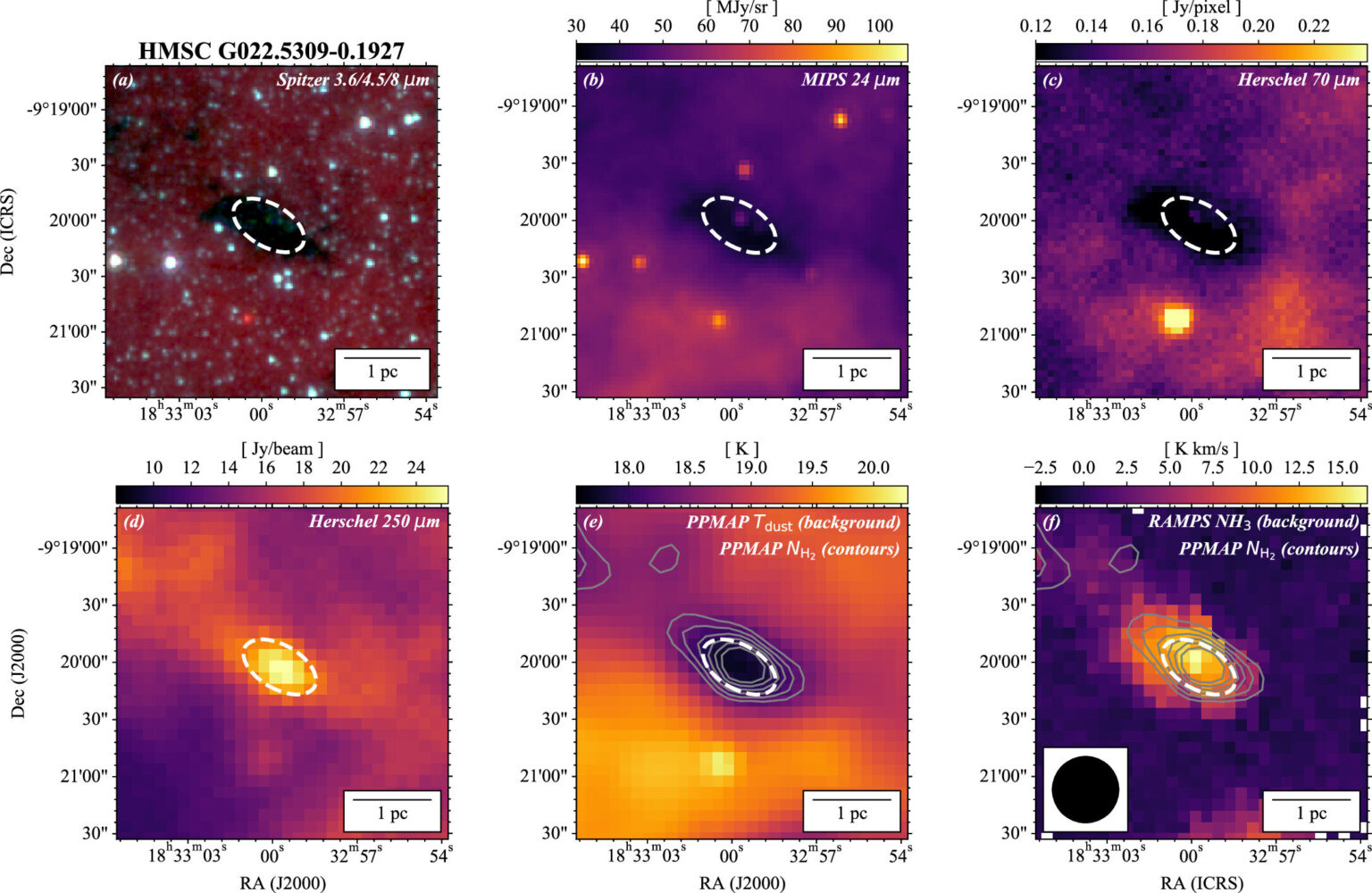A new study of 44 “stellar cradles” in our Galaxy has revealed that these gas-dust clouds are not in an equilibrium state at all, as previously thought. Instead, they experience an intense collapse. Gravitational forces are struggling to compress them.

Exploring “stellar cradles”
It is quite possible that stars don’t form under the same conditions as scientists are used to thinking. There is no doubt that this process takes place in cold gas-dust clouds, the so-called “stellar cradles”, but what they themselves look like, a new study published in The Astrophysical Journal Letters describes in a completely new way.
The Radio Ammonia Mid-Plane Survey (RAMPS) from the Green Bank Telescope was used in this work. It provided a survey of 24 square degrees of the galactic plane and explored 44 dense star-forming regions.
Scientists found that 43 of them, meaning almost all of them, are in a state where gravitational collapse could begin at any moment or is already happening. Simply put, these clouds begin to contract rapidly under their own weight. And this, apparently, gives rise to the formation of new luminaries.
How do stars form?
None of this would be very interesting if it didn’t contradict all that scientists have so far found to be true about the early stages of star formation. After all, the prevailing view now is that the dominant force in “stellar cradles” is not gravity, but turbulence. It keeps them stable for a certain long time and ensures the gradual growth of dense embryos, within which new stars then flare up.
The only force that can resist gravity under these conditions is magnetic fields. Only in places where they are really strong, massive stellar embryos can form. And this explains well why giant stars are born relatively infrequently.
It looks like the Universe is a much more complex place than we thought. And now scientists want to use the Atacama Large Array to get a closer look at what’s going on in the stellar nurseries.
Provided by phys.org


